
Publicado en 8th May 2018
Modificado en 17th Nov 2025
¿Cuál es la diferencia entre el cuarteado y el agrietamiento en un ópalo?
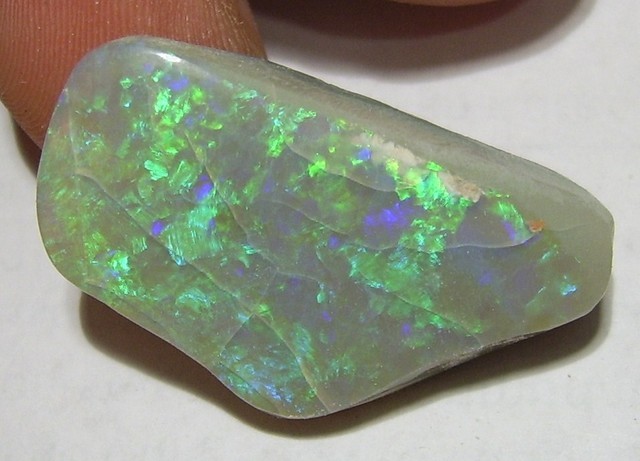 Muchos talladores de ópalos venden piedras con grietas o cuarteaduras. Existe una gran diferencia entre ambas, y a continuación se la mostraremos. Si bien no hay ningún problema en comprar un ópalo con cuarteaduras o fisuras, es importante que el comprador esté informado antes de la compra. Si su ópalo presenta líneas de fractura o cuarteaduras, no lo introduzca en un limpiador ultrasónico, ya que podría dañarlo.
Muchos talladores de ópalos venden piedras con grietas o cuarteaduras. Existe una gran diferencia entre ambas, y a continuación se la mostraremos. Si bien no hay ningún problema en comprar un ópalo con cuarteaduras o fisuras, es importante que el comprador esté informado antes de la compra. Si su ópalo presenta líneas de fractura o cuarteaduras, no lo introduzca en un limpiador ultrasónico, ya que podría dañarlo.
GRIETAS

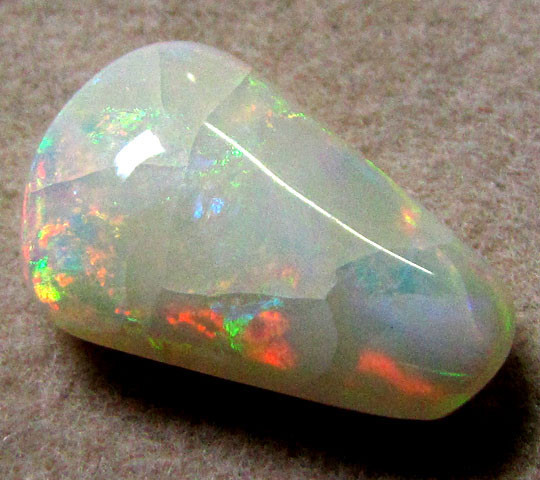
Una grieta puede ser una línea de falla menor o mayor. Puede ser superficial o interna. Si se observa una línea dentro del ópalo que refleja la luz, se trata de una grieta en la piedra. Las grietas externas disminuyen el valor/precio más que las internas.
Se ha demostrado que las grietas internas son estables y no se propagan. Algunos mineros de ópalo poseen piedras con grietas internas que no han sufrido ningún movimiento. Las líneas de grietas externas en un ópalo pulido pueden eliminarse, pero obviamente esto reduce el tamaño y el valor de la pieza.
Los ópalos agrietados no necesariamente se van a romper. Muchos ópalos agrietados se mantienen en buen estado, pero el mayor problema surge si un ópalo agrietado está engastado en un anillo, ya que el desgaste diario y los golpes pueden provocar su rotura. Por esta razón, muchos ópalos agrietados se engastan como colgantes y se pueden usar con frecuencia.
LOCURA
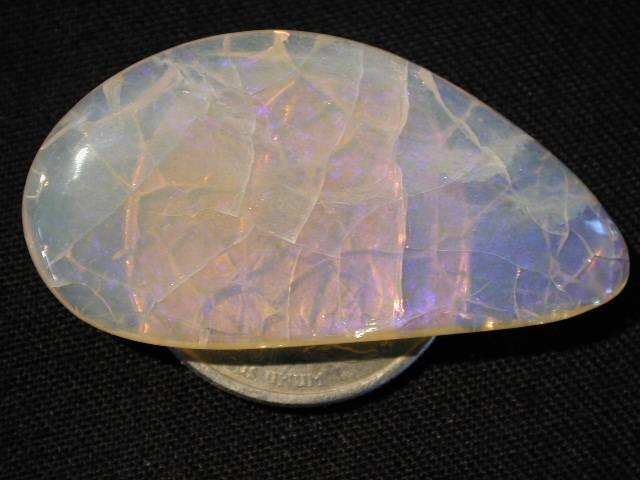
El craquelado se manifiesta como múltiples líneas de grietas. El ópalo craquelado se conserva principalmente como ejemplar o pieza de colección. No se recomienda su uso en joyería. Los ópalos craquelados pueden tratarse con Opticon, un tratamiento que los estabiliza.

La imagen superior muestra un ópalo etíope con una inclusión. Obsérvese la ausencia de reflejo de luz.
Las inclusiones no son grietas. Muchos ópalos contienen inclusiones naturales. Estas pueden ser burbujas de aire, materia vegetal e incluso potch.
ÓPALO AUSTRALIANO
La mayoría de los ópalos australianos son muy estables, siendo el ópalo negro [N1] considerado el más estable debido al menor tamaño de sus moléculas. Generalmente, un ópalo australiano que presenta una grieta se valora entre un 10 % y un 20 % en comparación con un ópalo estable de características similares. Se estima que solo entre un 1 % y un 3 % de los ópalos australianos se agrietan, pero algunos yacimientos son más susceptibles que otros.
La mayoría de los ópalos australianos contienen entre un 3 % y un 5 % de agua. Generalmente, cuanto más profundo excava el minero, mayor es el contenido de agua del ópalo. Las minas de Lighting Ridge alcanzan unos 30 metros de profundidad, lo que permite al minero evaluar la estabilidad del ópalo. Cuando el potch pasa de ser un material seco y duro a uno húmedo y empapado, esto indica que el material es estable. A mayor profundidad, el minero sabe que el ópalo tendrá, obviamente, un mayor contenido de agua.
La mayoría de los ópalos australianos no son porosos y, por lo tanto, no absorben agua.
LÍNEAS DE POTCH

Algunos ópalos pueden presentar vetas o líneas que recuerdan a telarañas. Estas no son grietas, sino líneas de potch. Es fácil para el tallador comprobarlas, ya que las grietas reflejan la luz, mientras que las líneas de potch no. Estas últimas disminuyen el valor del ópalo según su profundidad. Generalmente, no afectan a su estabilidad.
ÓPALO ETÍOPE
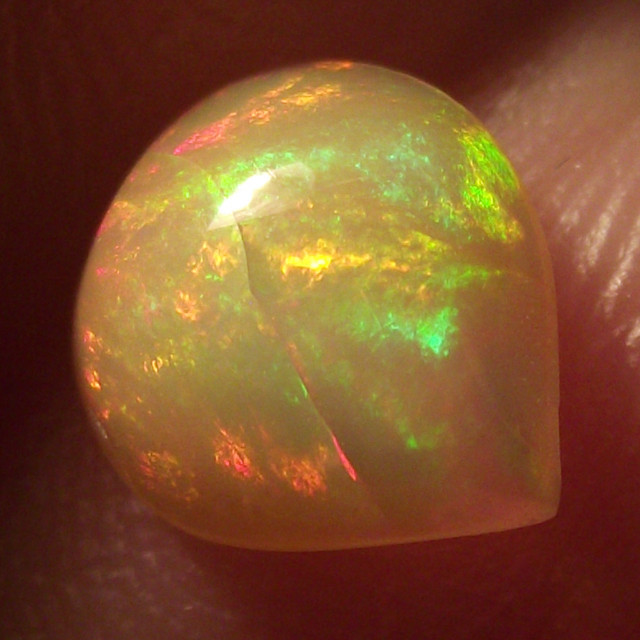

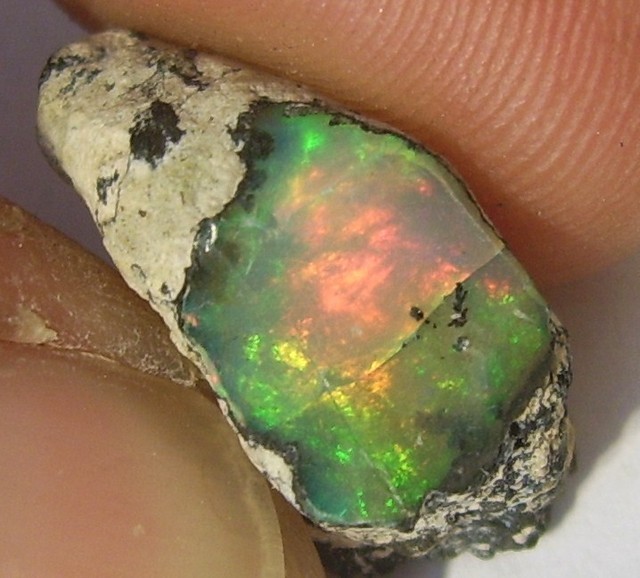
El ópalo etíope es un ópalo hidrófano . El ópalo hidrófano absorbe agua. Cuando el ópalo etíope se deshidrata, su base se vuelve más opaca; cuando se hidrata, se vuelve más transparente. El tiempo de transición de hidratado a deshidratado puede variar de minutos a días, pero la mayoría de los ópalos completan la transición en pocas horas.
PRUEBA DE FRACTURA DEL ÓPALO ETÍOPE
Durante siglos, las piedras preciosas se han sometido a pruebas de fractura o exfoliación para comprobar su separación o exfoliación en el material en bruto. Todos los principales centros de tallado realizan pruebas de fractura antes de cortar o tallar el material.
Incluso antes de que se inventaran las técnicas de ensayo modernas, el material en bruto se sometía a pruebas. Durante el invierno, se calentaba una habitación con fuego de leña y se salpicaba repetidamente agua fría sobre el material en bruto.
Hoy en día, este proceso básico aún se utiliza para los ópalos, que consiste en sumergirlos en agua y secarlos en un ambiente cálido, pero no caliente. Este proceso puede repetirse varias veces antes de comenzar el tallado. Algunos ópalos con una pequeña fisura a veces se expanden bajo el agua.
Este proceso pone a prueba los puntos de tensión y aparecerán grietas en el punto de clivaje más débil. El ópalo ya está listo para ser cortado y pulido para eliminar cualquier grieta visible.
Las fracturas, fisuras y grietas pueden aparecer como:
- patrones azucarados granulares
- descansos suaves e uniformes
- roturas irregulares con bordes ásperos
Obviamente, los talladores deciden cortar un ópalo después de haberlo fracturado y comprobado de qué lado se produce la fractura. Esto requiere gran habilidad, y un tallador profesional cortará siguiendo la dirección en la que se haya abierto la fractura.
Se requieren muchos años de experiencia para que un tallador comprenda la mejor manera de tallar un ópalo. Los maestros talladores de ópalos cobran un porcentaje de entre el 3% y el 5% por las piedras de mayor calidad, ¡y en la mayoría de los casos vale la pena pagarlo!
ESTABILIZACIÓN DE ÓPTICON
El Opticon es la forma más común de estabilizar el ópalo. Sumerja las piedras en un frasco de conserva lleno de suficiente Opticon para cubrirlas y cierre bien la tapa para que no se escape el agua. La condensación puede enturbiar la resina.
- Coloca el frasco en una olla de cocción lenta común llena con suficiente agua para que el frasco no flote.
- Suba la temperatura a 150-170 grados Celsius (302-338 grados Fahrenheit).
- Utilice un termómetro para comprobar la temperatura. Recomendamos usar un termómetro de cocina para carne.
- Cocinar durante 24 horas
- Escurre el exceso de resina y colócala sobre papel de aluminio.
Utilice una máquina de vacío como las que se usan para envasar bolsas de alimentos. Esto extrae el aire de la bolsa.
- Aspira durante al menos una hora.
- Utilizando un pincel de estilo artístico, pinte la piedra con una mezcla débil [40 a 1] de resina y endurecedor y vuelva a aspirar durante 15 minutos.
- Elimine el exceso de humedad con un paño impregnado en acetona.
- Cuando las piedras ya no estén pegajosas, pula o vuelva a pulir.
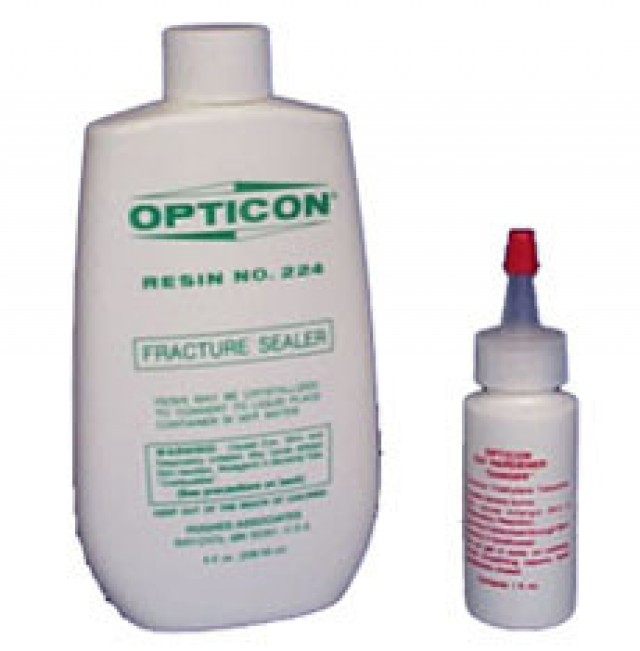

Este ópalo arlequín de 54,7 quilates se vendió por más de 1100 dólares. Cuando se talló hace cinco años, presentaba craquelado. El propietario lo trató con Opticon y lo vendió por aproximadamente el 10 % de su valor sin tratamiento.
PEGAMENTOS
También puedes recubrir la piedra con pegamento instantáneo y calentarla bajo luces intensas. La capa vítrea que la recubre le proporciona estabilidad durante el pulido.
ÓPALO DE BOULDER
El ópalo de roca se forma principalmente sobre una base de hierro y es estable. Esta piedra puede variar desde un color marrón chocolate intenso hasta una piedra arenisca de color marrón claro. El hierro contribuye a la estabilidad del ópalo. Pueden aparecer algunas fisuras con un ángulo de 45 grados, pero el ópalo seguirá siendo estable. Algunos ópalos de roca cristalinos también pueden presentar fisuras. Los yacimientos de ópalo de Koroit y Yowah se consideran estables.
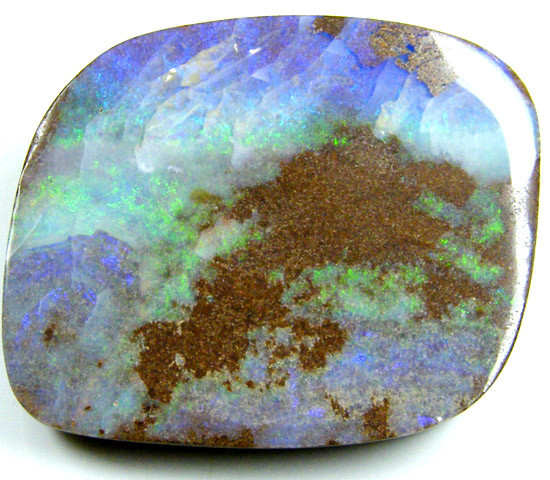

ÓPALO MEXICANO
La mayoría del ópalo mexicano es estable. Los ópalos agrietados o con fisuras pueden aparecer cuando el potch y el ópalo se cortan en una sola pieza, ya que cada uno tiene un umbral de presión diferente.


ÓPALOS DE EE. UU.
Los ópalos estadounidenses generalmente no se consideran estables y suelen fabricarse en tríos o estabilizarse. Los ópalos estadounidenses tienden a agrietarse, ya que su contenido de agua puede alcanzar hasta el 14 %.
ÓPALOS BRASILEÑOS
Generalmente se consideran estables, ya que su contenido de agua suele ser inferior al 5%. Los ópalos son de semitranslúcidos a blanco translúcidos.
ÓPALO HONDURANO
El ópalo de Honduras sobre matriz se considera estable, pero algunos cristales formados sobre la matriz pueden presentar líneas de fisura.
Explore nuestra colección de ópalos
Buscar en el Opal Encyclopedia
Subastas relacionadas
Artículos relacionados
Apasionados por los ópalos, Wayne y Estella Sedawie fundaron Opal Plus hace más de 14 años y han descubierto que internet es una herramienta valiosa. Es donde se realizan la mayoría de las transacciones internacionales de la empresa.
17th Oct 2018
Nueva Gales del Sur produce la mayor cantidad de ópalos australianos en términos de valor. Las dos zonas más famosas son Lightning Ridge, conocida por producir ópalo negro, la variedad más valiosa, y White Cliff.
16th Oct 2018
últimos artículos
Descubre cómo se clasifican los ópalos y qué factores influyen en su precio. Desde el color y el brillo hasta el corte y el origen, aprende cómo se valora cada tipo de ópalo, con ejemplos de rangos de precios.
19th Jul 2023
¡Acompáñanos en un viaje y descubre el poder curativo de los ópalos de la mano de nuestra escritora invitada Vivien Schapera, de Crystal Healing Techniques!
20th May 2023
El ópalo Reina de la Llama (o de Fuego) es el ópalo más caro del mundo, vendido por el equivalente actual a 3 millones de dólares. ¡Descubre todo sobre su historia y sus cualidades!
18th Feb 2023
Categorías de artículos
All there is to know about Opals including Black Opals, Ethiopian Opals & Boulder Opal
14 Artículos
Check out our fascinating information and articles on all things amazing in the Opal world
41 Artículos
Opal Auctions sellers who are approved as opal Verified Sellers
4 Artículos








